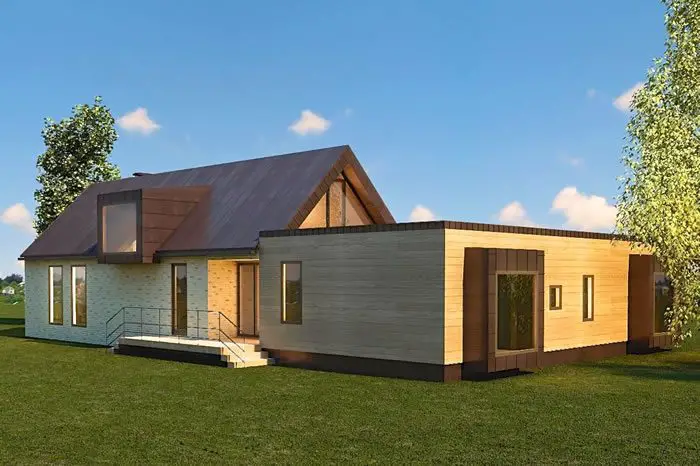[vc_row][vc_column][vc_column_text]Prefabricated houses can be used for temporary or long-term facilities such as construction camps, schools, civilian or military housing and industrial facilities. Health care facilities, sales and retail offices and fast food restaurants can also employ the use of these houses.
In the recent past Africa has seen an upsurge in construction of various infrastructure projects some situated in remote locations where housing for staff is inadequate or unavailable altogether. When you consider the fact that for successful completion of these projects the welfare of the construction staff must be taken into consideration, providing staff with secure, durable accommodation becomes a priority and over the years prefabricated buildings otherwise known as modular houses have come in handy in providing the solution to temporary housing for staff on building sites.
Prospect for growth
Prefabricated houses are growing in popularity and size as more options become available. These houses are built in sections at a factory and the sections are transported to the building site and then joined together by local contractors.
Recent trends show a move in the market from basic accommodation for workers in camps at construction, mining or oil facilites to the manufacture of hospitals, schools and virtually any aspect of accommodation. Africa continues to be of great focus to most manufacturers of prefabs because of the ongoing development of infrastructure in most regions.
Advantages
But what makes prefabricated homes so attractive, well for a start they are less expensive per square foot than site built houses. When it comes to conforming to building codes, you need not worry as prefabricated houses are normally built to conform to all building codes at their destinations. Local building inspectors can check to make sure a prefabricated home’s structure meets requirements and that all finish work is done properly. It is also important to note that these houses are durable and they have the same longevity as the site-built homes.
One other merit is that as opposed to permanent built homes prefab homes can be demounted and moved from place to place with ease hence reducing accommodation problems, costs and saving time that might have been wasted in looking for rental houses. They are also light and can be setup easily and quickly to meet a client’s specifications. Prefabricated houses can be partitioned to have multiple rooms such as bathroom facilities, bedroom and kitchen.
Prefabricated houses
Most people confuse modular houses with manufactured homes and are unaware of the variety of housing options that fall under the umbrella of factory assembled homes.
Manufactured houses are normally shaped like large rectangles and they are easy to identify. They come with most systems already completed such as paint and flooring with the siding or some type of exterior finish already applied.
On the other hand prefabricated houses are built in pieces and they have no standard shape. Every modular house is composed of two or more modules arriving on site and assembled separately.
While manufactured houses depreciate in value over time prefabricated houses increase in value over time just like on site construction. The construction techniques used to build a prefab house ensure a home that has less heat loss, saving you energy and therefore money over time. The materials used are also environmental friendly.
When ordering for prefab houses, it is advisable to do your research well and get value for your money. Look for a supplier who can do more than just supplying. A supplier who offers reasonable prices and can offer site management or consultancy and any after sale service should be given priority.[/vc_column_text][vc_button title=”VIEW COMPANIES” target=”_blank” color=”btn-primary” icon=”wpb_arrow” href=”http://constructionreviewonline.com/prefabricated-housing”][/vc_column][/vc_row]

